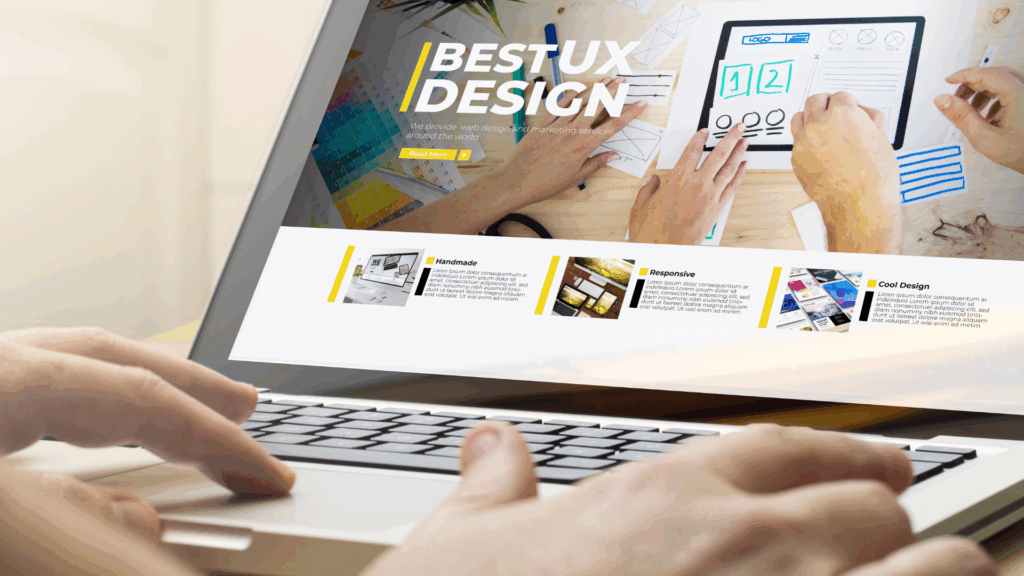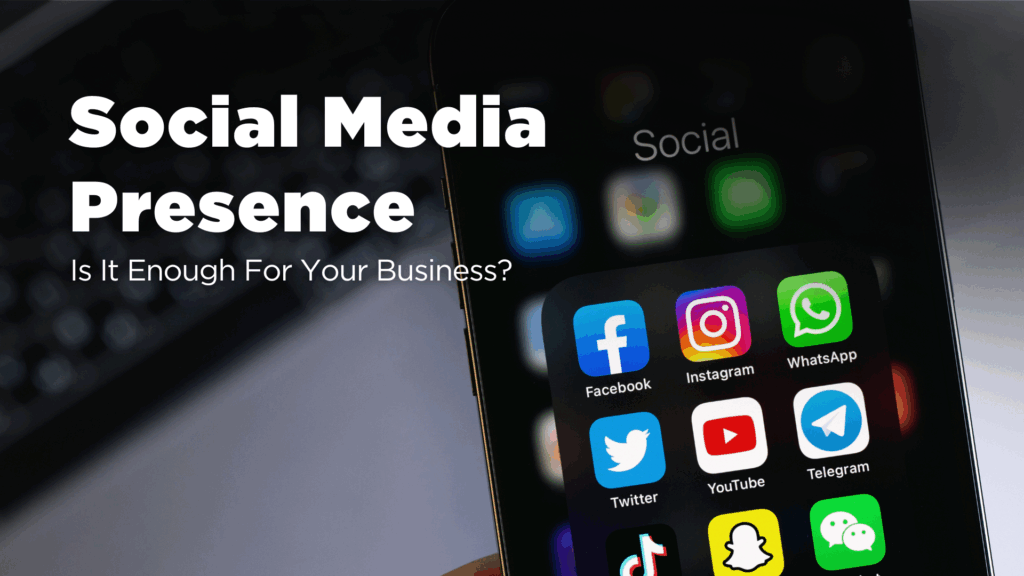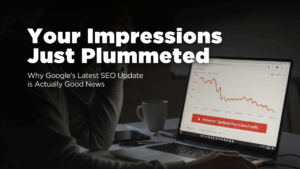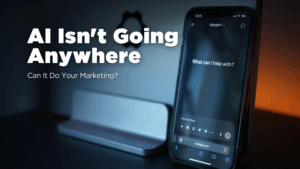It’s easy to assume that an active social media presence is all a small or mid-sized business (SMB) needs to grow. After all, platforms like Facebook, Instagram, and TikTok offer access to huge audiences and free tools to promote your brand.
Social media is indeed a powerful channel. Over half of SMB owners say social media marketing has helped increase their sales. However, relying solely on social media comes with serious limitations. In fact, small businesses report that their company website and online ads are just as important as social media in driving success.
This article shows why relying solely on social media can limit your potential and how combining it with SEO, email, PPC, reviews, and website optimization leads to long-term results.
Why Social Media Alone Isn’t Enough
Social media is a powerful tool for building awareness, connecting with your audience, and showcasing your brand’s personality. Platforms like Instagram, Facebook, and TikTok offer incredible reach and creative freedom, but they shouldn’t be the only tools in your digital marketing toolbox.
Here’s why a social-only approach can limit your growth:
Reach Is Limited by Algorithms
Even with great content, only a small percentage of your followers see your posts. According to a study, the average Instagram post reaches just 3.5% of followers, while Facebook sits around 1–2%. As algorithms evolve, visibility can fluctuate, often requiring ad spend to maintain momentum. Social media should spark engagement, but pairing it with other channels helps ensure your message reaches a wider audience consistently.
You Don’t Own the Platform
Your social profiles are hosted on third-party platforms, which means you’re subject to their rules and changes. If a platform updates its algorithm, removes a post format (like LinkedIn’s carousels), or suspends your account, your reach could take a hit. Complementing your social presence with channels you control (like your website or email list) creates more stability.
Lower Intent to Buy
Social media excels at attracting attention and building relationships, but it’s not always where people make buying decisions. Users are often browsing for entertainment, not actively looking for a service. That’s why it’s important to lead your audience to spaces where they’re more likely to convert, like a high-performing website or a targeted landing page.
Social Isn’t a Full Sales Funnel
Your social page is great for quick updates and engagement, but it can’t always provide the full experience. Product details, pricing, FAQs, or support options are often better delivered through your website. When users have to click “link in bio” to get more information, that extra step can create drop-off. Integrating your social with a strong website helps guide users from awareness to action.
Credibility & Trust Issues
While social media builds familiarity, your website builds credibility. Three out of four users say they judge a company’s credibility by its website design, and a company’s website is among the top three most trusted sources when researching local businesses. A professional website reinforces trust and gives your social strategy more weight.
Bottom line: Social media should absolutely be part of your marketing mix, but it works best when integrated with a full digital strategy. When combined with SEO, email, paid ads, and a strong website, social becomes even more effective at driving real, lasting results.
Capturing High-Intent Traffic with SEO
SEO is the practice of improving your website’s visibility in search engines like Google, and it’s one of the most powerful ways to attract ready-to-buy customers. Over 63% of all web traffic comes from Google, far surpassing any social platform. And unlike social content that fades quickly, SEO creates long-term value: optimized pages and blog posts can continue driving traffic month after month. Best of all, these visitors are actively searching for solutions, which means SEO leads convert at 14.6%, compared to just 1.7% for outbound methods like cold emails or mailers.
For small and mid-sized businesses, SEO offers a cost-effective way to get in front of qualified local customers without relying on paid ads. To start, make sure your website is indexed by Google, includes relevant keywords, and is optimized for location-specific searches. Claiming your Google Business Profile, adding your business to directories, and creating locally focused content all help improve visibility. While SEO takes time to ramp up, the long-term ROI is undeniable; it builds an always-on engine for attracting high-intent leads to your business.

Website & Content Strategy: Your Digital Home Base
If social media is rented space, your website is your owned storefront, fully under your control. It’s often the first place people go after discovering your business on social media or through search, and it plays a major role in building trust. A professional site allows you to present your brand clearly with customized design, in-depth service or product details, customer testimonials, and calls-to-action, things that are difficult to organize on a social profile.
A smart content strategy turns your website into a conversion engine. By publishing helpful blog posts, how-to guides, case studies, and videos, you can demonstrate expertise while improving SEO. Your site also enables powerful functionality like online reservations, e-commerce, lead forms, and newsletter signups that make it easy for users to take the next step. Plus, you gain the ability to track user behavior and optimize over time.
Bottom line: Your website should be the central hub of your digital marketing, with every channel, social, search, email, and ads working to drive traffic there. If you don’t have a strong site in place, that’s the first place to start.
Email Marketing – Nurturing and Retaining Customers
Unlike social followers who come and go, an email list is a valuable, owned asset made up of warm leads and existing customers. It gives you direct access to people who’ve already shown interest in your business without relying on algorithms. Done right, email delivers some of the highest ROI in digital marketing. Studies show it generates 10x more clicks and 174% more conversions than social posts. With open rates averaging 20% or more, your message is far more likely to be seen and acted on in an inbox than in a feed. Plus, email provides a distraction-free space to promote offers, share content, and drive traffic back to your site.
Email is also a powerful relationship-building tool. You can segment your list to deliver personalized, relevant messages that match each customer’s interests or purchase history. For prospects, that might mean a helpful tip or case study to build trust over time. For returning customers, it could be a discount or a reminder to re-engage. This consistent, value-driven communication keeps your brand top of mind, something that’s tough to achieve with occasional social media posts alone. Best of all, you own your email list. It’s not subject to reach limits or policy changes, making it a reliable and scalable way to convert interest into lasting revenue.
Paid Search (PPC) – Immediate Reach with Measurable ROI
While SEO builds visibility over time, Pay-Per-Click (PPC) ads like Google Ads deliver instant exposure. By bidding on relevant keywords, your business can appear at the top of search results the moment someone searches for what you offer. For example, a bakery can run ads for “custom birthday cakes in [City]” and reach local buyers at the exact moment of intent. PPC users tend to convert at a higher rate. Studies show they’re 50% more likely to make a purchase than organic visitors. Plus, PPC is trackable: you know exactly how many clicks, leads, and sales your ads produce, making ROI easy to measure.
Google reports that businesses earn an average of $2 for every $1 spent on Google Ads. And because you only pay when someone clicks, PPC is budget-friendly and scalable. Start small, target local keywords, and grow what works. You can also test messaging, offers, and landing pages to see what converts best. Need quick results? PPC is perfect for time-sensitive promos or lead generation while your SEO builds momentum. Just make sure your ads point to a relevant, high-converting landing page, ideally on your website, so that click turns into a customer.

Don’t Put All Your Eggs in the Social Media Basket
A social media presence is valuable but not enough on its own. The most successful small and mid-sized businesses take a diversified approach: they rank on search engines, maintain an informative website, engage via email, run targeted ads, cultivate positive reviews, and measure it all to keep improving. By developing a comprehensive digital strategy, you build a stronger foundation for growth that doesn’t rely on any one platform’s whims. Social media can spark awareness and conversation, but it’s the combination of multiple channels working together that truly drives revenue and builds a resilient brand in the long run.
Looking to level up your digital strategy? At Adapting Social, we help small and mid-sized businesses go beyond social media through SEO, paid media, creative services, and now, intelligent AI-powered marketing. By combining real-time data with human strategy, we create visually compelling campaigns that are built to convert.
Whether you’re starting small or scaling fast, we’ll help you build a smarter, results-driven digital presence across every channel.




